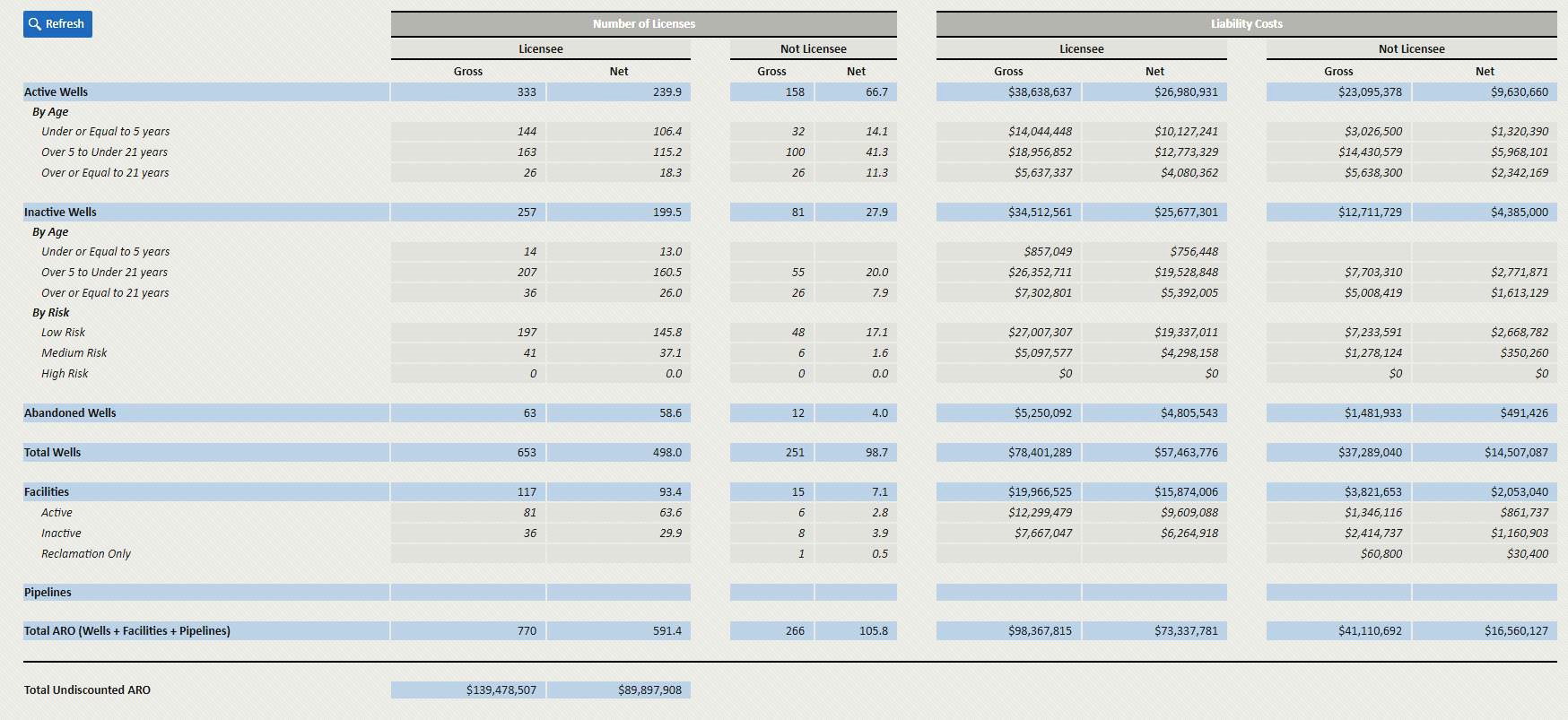Word to the Wise: Why you need to pay attention to your non-operated retirement liabilities, and how to do it
September 3, 2019
Asset Retirement Obligations (ARO) only pertain to the operators of wells and facilities, right? Wrong!
Each week, XI Technologies scans its unique combination of enhanced industry data to provide trends and insights that have value for professionals doing business in the WCSB. If you’d like to receive our Wednesday Word to the Wise in your inbox, subscribe here.
With the relatively high visibility of Licensee Liability Rating (LLR) and Liability Management Rating (LMR) regulatory programs over the past several years, it’s easy to see why there might be some confusion. The structure of existing LLR and LMR programs have historically assigned all deemed liabilities to the licensee of a well or facility. As such, some may incorrectly assume that since deemed liabilities rest with the licensee operator, then non-op partners don’t need to pay as close attention to their abandonment and reclamation liabilities on non-op assets. No doubt operators would see things differently – expecting those with a working interest to share not just in the production but in the operating and end of life costs. In a December 2018 blog on chain of title during an insolvency, we outlined some of the liability issues for working interest partners in the case of operator insolvency.
For many producers, non-op assets are a big part of their portfolio, sometimes even make up the majority of it. But tracking their ARO for those assets, who they share those assets with, and the potential for some of those assets to be retired by their operators can be much harder to do. Without a system in place for monitoring and evaluating their non-op wells and facilities, they might not be aware of pending non-op ARO liabilities until a cash call comes in and wreaks havoc with their budget.
Keeping track of non-op ARO becomes even more important in light of British Columbia’s mandatory closure laws and Alberta’s Directive 013 reduction targets and the Area Based Closure Program. These place a degree of urgency on abandoning dormant sites, and companies not on top things with their working interest partners could easily be in for a large bill in the coming years that they weren’t expecting and hadn’t budgeted for. The bill for working interest obligations would be in addition to the liability costs they were already expecting with their own operated asset retirement obligations.

As the liability management landscape has been changing these past several years, XI Technologies has been staying on top of the challenges. The company has developed a system that makes it easy to evaluate, track, and manage both operated and non-operated liabilities. XI staff have created a short video to demonstrate how XI’s ARO Manager, coupled with the XI’s detailed working interest listing for the entire WCSB and its standardized ARO Cost Model, makes it easy to see when you may have abandonment and reclamation projects coming up, and the estimated ARO costs you’ll need to budget for those. You can watch the video here.
Do you know all your op and non-op partners? Do you have a good grasp on your potential non-op liabilities? XI’s ARO Manager is the ideal tool to help companies evaluate, track, manage, and report on these obligations for operated and non-operated assets. Companies can utilize a standardized cost model to assess total liabilities, or they can import alternate cost models and perform scenario analysis to determine most efficient, low-cost approach to meeting the mandatory abandonment and reclamation deadlines. The ability to research and verify all current partners, will allow companies to proactively communicate with partners to plan and budget for joint abandonment and reclamation activities and eliminate surprise bills for abandonment and reclamation of jointly owned inactive wells and facilities.
For a more in-depth look at ARO Manager book a personalized demo, or contact XI Sales.
